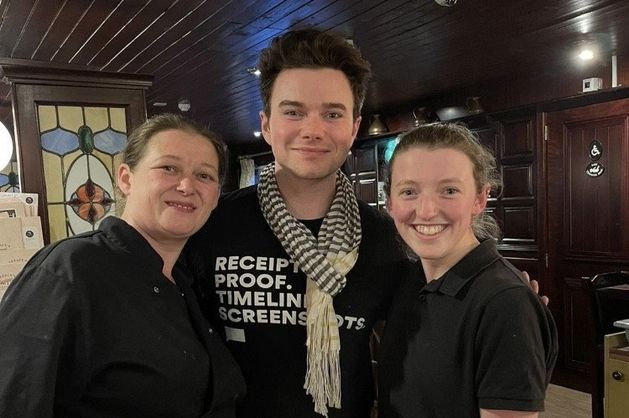Cold War fallout shelters survive in childhood memories | Whale’s Tales

My brothers and sisters and I were children of the late 1950s and early 1960s, and we can prove it with credibility—we grew up in a real, above-ground, brick-and-mortar fallout shelter in the back yard.
When my father began the project in 1961, he was a 31-year-old father caught in the midst of the Cold War. Alarmed by conflicts with the Soviet Union, tensions over West Berlin, and concerned about the safety of his growing family in the event of a feared nuclear attack, these were frightening times for everyone.
At that time, the Whale family consisted of four children besides Mom and Dad: my big sister Carole and my brothers Jim, Matt and Jack. My little sister Diane and I were still a year or two and a few blinks away from completing the final list.
In the photos, you can see my sister and brothers pretending to use their tiny strength to perform a tremendous feat of strength by holding up bricks, but in reality, the task was performed by wooden slats underneath the bricks, hidden from the camera.
My father never finished the bomb shelter. As he told me many years later, one afternoon in the afternoon heat he paused, looked at the beautiful northeast corner of the yard, which he was covering with a concrete box, and asked himself this question: “Why the hell am I doing this?”
I’m not sure of his motives. Obviously he still loved his family.
So my father abandoned his plan – he never installed ventilation and never fitted the shelter with any amenities. I know that in later years he viewed the shelter as a lasting testament to the “stupidity” of his youth.
The apple tree that my parents had planted years before and that we had climbed to get to the roof of the shelter remained in front of the building. It also played an important role in our childhood.
So the shelter stood there for more than eleven years, 2.5 to 3 meters high, and about eight pieces of scrap wood covered the entrance where the only bomb- and radiation-proof door should have been.
Since the fallout shelter was boarded up and I had no access to the interior, it aroused great curiosity in a small child like me.
In 1971 or 1972, someone kicked the makeshift wooden barrier. I seem to remember a friend and I doing this task, but I could be wrong. No one was angry. What I do remember clearly, however, is that the deep secrets I had imagined growing up in the shadow of the shelter were nowhere to be seen when I looked inside.
Although the shelter never fulfilled its original purpose, it has served numerous purposes over the years.
Our babysitter’s husband, forbidden to see her by her parents because they disapproved of the marriage, would climb to the roof of the dugout to catch a glimpse of his wife, who lived one block north at her parents’ house on 17th Street Northeast. My brother Jim later spray painted a batter’s box on two sides, complete with right and left corners, and thus developed his impressive throwing arm, with which he would throw balls at it for hours.
During Fourth of July celebrations in the backyard with our neighbors, the McCurdys, we would run around the building with the sparklers our parents had given us. Believing I was closer to the sky and the moon and stars would be more visible from just 8 or 10 feet up, I put my prized telescope on the roof in the early 1970s. A friend of Jack’s christened the device “Goob’s Lab,” after my childhood name.
I remember a few neighborhood girls trying to get me to smoke in it, but I hated the taste of cigarettes, so I was spared the lesson. It provided physical protection during our pinecone and snowball fights, when we played soldier, and during our endless games of hide-and-seek. And finally, we always had a supply of bricks on hand for whatever we came up with.
My parents talked about having the relic professionally wired and converted into a kind of meeting place for us children, but that never happened.
In 1975, my brother Jim died in a car accident, and my parents got the insurance money they never expected and never wanted. They used it to build a recreation room behind the house, and the money also covered the cost of demolishing the fallout shelter. One spring day in 1976, Jack Watkins, a contractor and former owner of the long-vanished Hillside Lanes Bowling Alley, and his crew demolished it with a wrecking ball and then hauled away most of the remains.
When, a year or two later, it was time to remove the remaining brick fragments from that corner of the yard, my father would not let me participate.
“Hey, who asked you for help?” he barked.
I understood. I know he thought he had made the mistake of building Whale’s Folly and that, by God, he would be the one to restore that corner of the yard to the condition it was in before I opened my eyes to the world. I’m also sure his determination to do the job alone had something to do with my late brother – backbreaking work to ease the pain.
To this day, the nuclear bunker appears in my dreams as a symbol of my childhood and many good times. Time and the patina of memory have redeemed the beast. I wish they could have redeemed it for Papa.
–
Robert Whale can be reached at [email protected].



